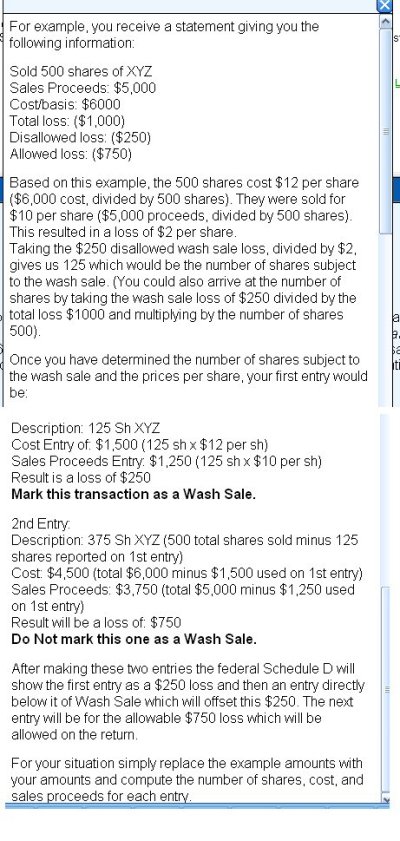TromboneAl
Give me a museum and I'll fill it. (Picasso) Give me a forum ...
- Joined
- Jun 30, 2006
- Messages
- 12,880
Last June I transferred $20,000 from the VG 500 index fund to the money market. The cost basis for those shares was $25,021.04, but the Average Cost summary that I got from VG shows a Disallowed Loss Amount of $221.50.
Question 1: why would that be disallowed? I didn't put any money into that account in 2009.
Question 2: TaxAct asks only for sales proceeds and cost basis. Do I put in $24,799.54 for the cost basis?
Thanks.
Question 1: why would that be disallowed? I didn't put any money into that account in 2009.
Question 2: TaxAct asks only for sales proceeds and cost basis. Do I put in $24,799.54 for the cost basis?
Thanks.






